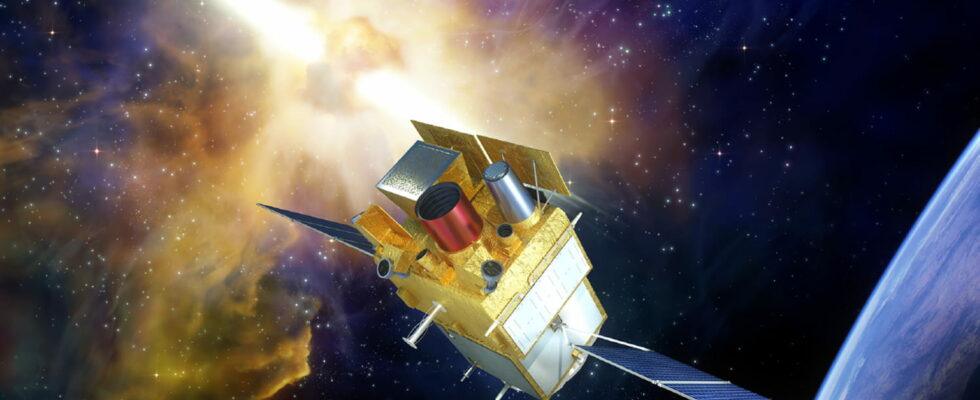The French and Chinese space agencies have placed a satellite called “SVOM” into orbit. This probe watches for the most powerful explosions in space.
While diplomatic relations can sometimes be delicate between France and China, especially since the start of the conflict in Ukraine and support for Russia, the conquest of space often ignores these concerns. American and Russian astronauts continue to collaborate in the ISS and France and China also launched a very special satellite together in June. Its name? SVOM for Space-based Multi-band Variable astronomical Objects Monitor.
Literally, it is a “multi-band astronomical variable object monitor”, and its mission is scheduled to last three years. It is the result of a collaboration between the two national space agencies, the China National Space Administration (CNSA) and the Centre National d’Etudes Spatiales (CNES) with the main contributions from the CEA and the CNRS for France. This little space spy will now be able to begin its observation work.
What exactly is its mission? In orbit for nearly two weeks at an altitude of some 625 kilometres, it acts as a sentinel in space, monitoring possible “gamma-ray bursts”. Behind this expression lie the most powerful explosions in the universe, generated by extremely energetic events in the distant regions of the universe. This could be the fusion of two black holes or the collapse of a massive star at the end of its life. To give an idea of the energy produced, the CEA points out that the “colossal release of energy is equivalent to that generated by the Sun during its entire life”.

Although these bursts of light offer a unique insight into major cosmic phenomena, they are difficult to detect because they can occur anywhere in the sky and last only a few seconds, or rather a few thousandths of a second. Furthermore, this light was sometimes emitted when the universe was less than a billion years old. This means that before reaching Earth, the light travels several billion light years and thus takes on the imprint of the multiple eras of our Universe. Finally, when they do reach us, gamma rays are easily absorbed by the Earth’s atmosphere. This is why it is necessary to use space probes to record them.
This one weighs almost a ton, and its development began in… 2006! It took the Chinese and French teams 18 years to complete its design! SVOM would be able to observe in different wavelengths and obtain “the most complete data set” showing how explosions occur and evolve over time.
To achieve this, the probe is equipped with four state-of-the-art instruments, two made in France and two in China. The French-made ECLAIRs telescope will play a key role in autonomously detecting bursts in the gamma-ray and X-ray energy range in near real time. Meanwhile, the Chinese-made visible telescope will track the light emitted in the visible range after the gamma-ray burst, as part of the explosion process. On average, the probe is expected to detect 70 to 80 gamma-ray bursts each year.
